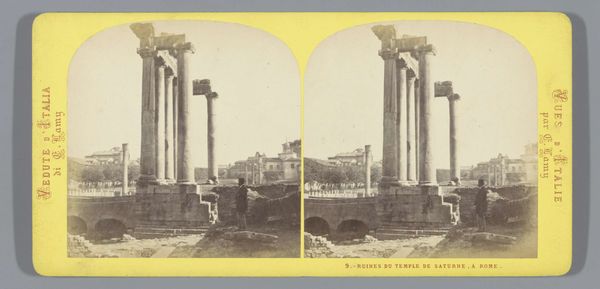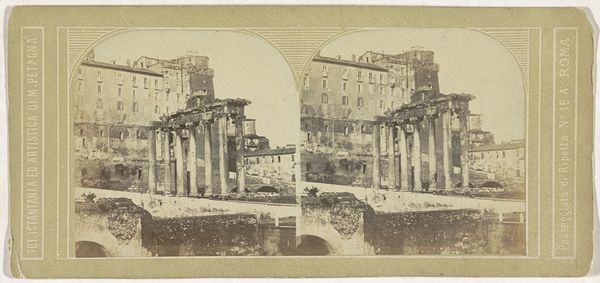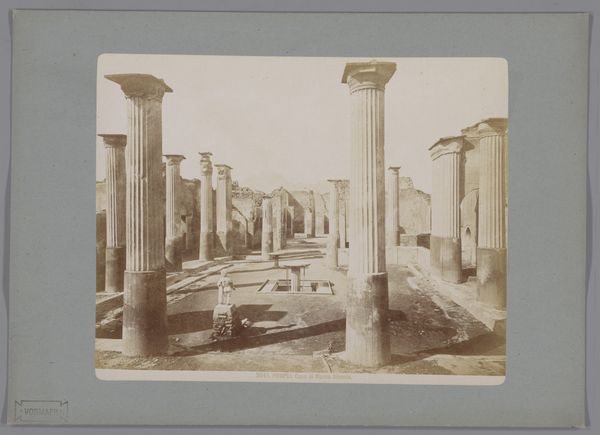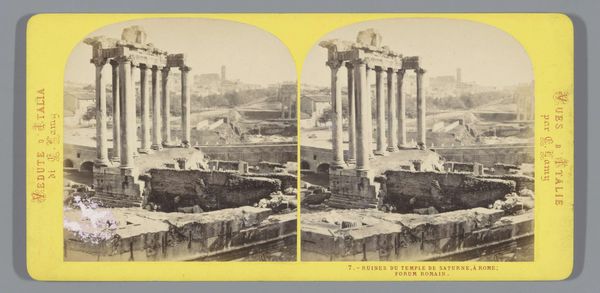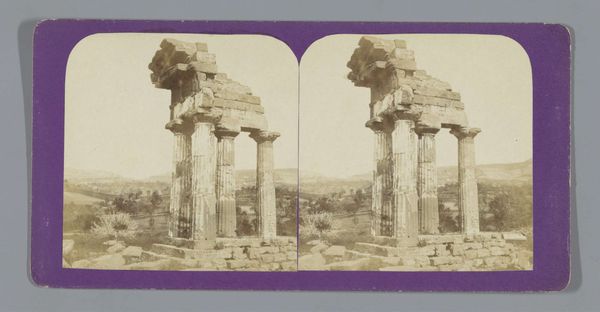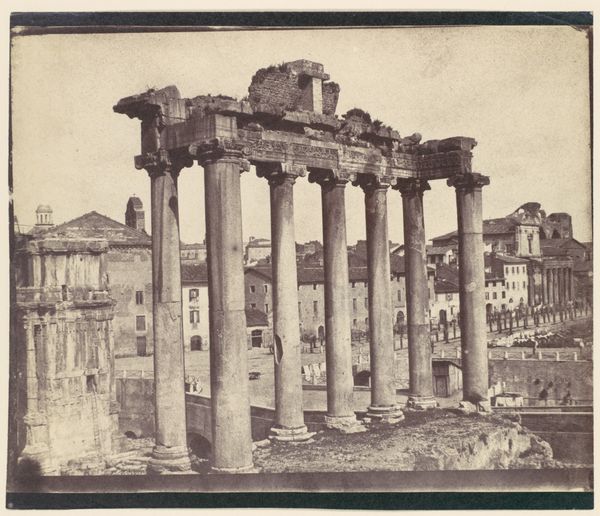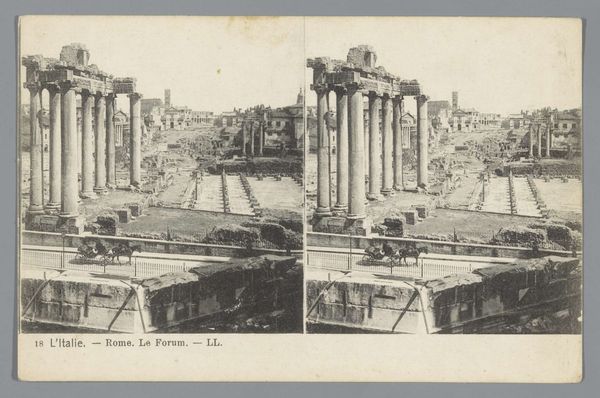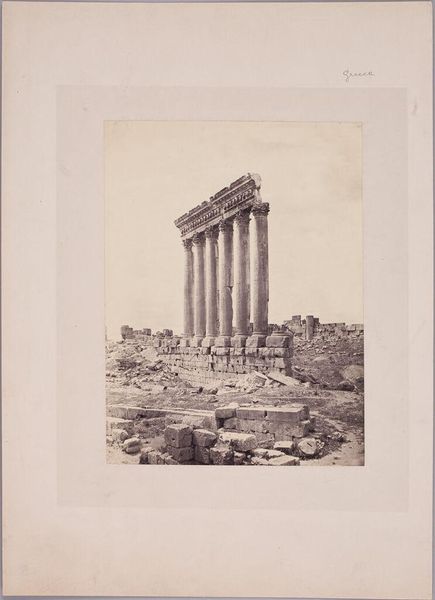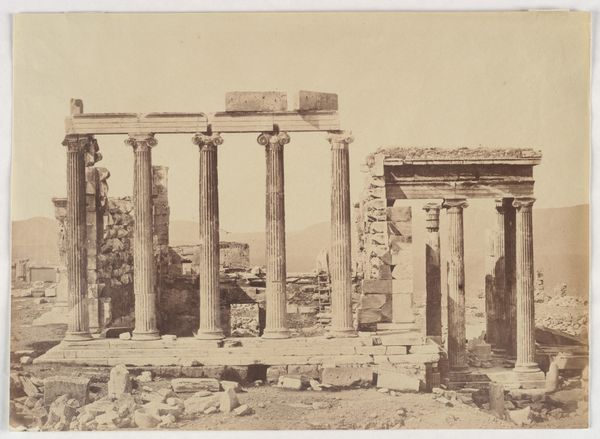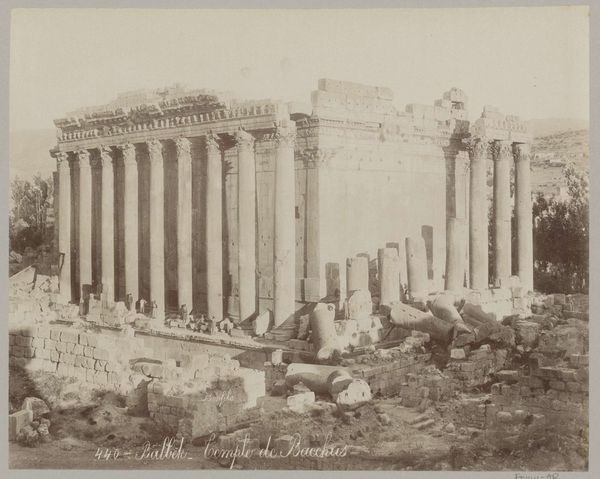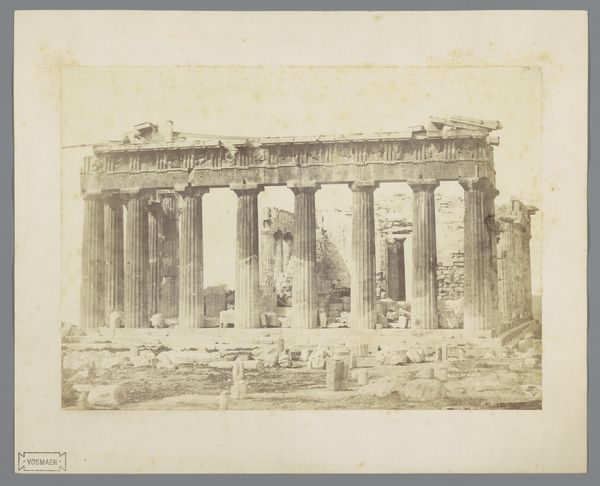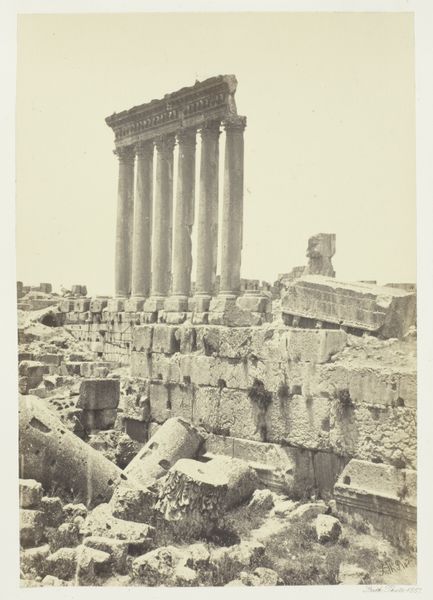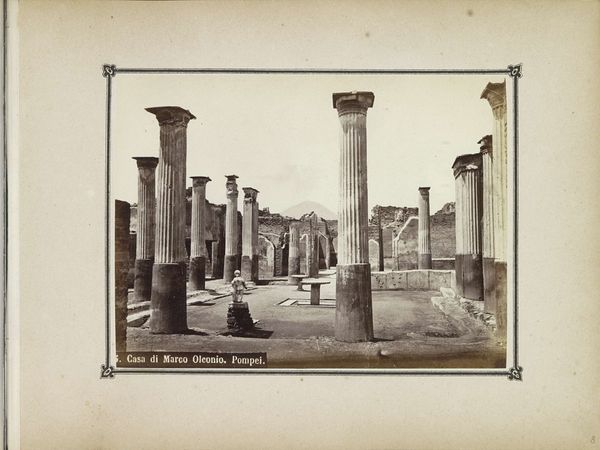
print, photography, gelatin-silver-print
greek-and-roman-art
landscape
perspective
photography
classicism
ancient-mediterranean
gelatin-silver-print
cityscape
Dimensions: height 88 mm, width 176 mm
Copyright: Rijks Museum: Open Domain
Curator: What strikes me immediately about this gelatin-silver print, “Gezicht op de Tempel van Saturnus in Rome” by Jean Andrieu, created sometime between 1862 and 1876, is the palpable weight of history it carries. Editor: My immediate impression is one of romantic ruin, decay… a stark beauty in the face of time’s relentless march. The sepia tones contribute so heavily to this feeling of nostalgia. Curator: Indeed. This image presents the ruins of the Temple of Saturn, placing it within the ongoing narratives of colonialism and archaeological exploration in the 19th century. There’s a romanticized vision of the past, yet, simultaneously, the modern gaze claiming ownership of this ancient history. Editor: Note how the pillars, even in their fragmented state, reach for something transcendent. Saturn, of course, was a complex deity; agriculture, liberation, dissolution… the photograph almost becomes an emblem of the cyclical nature of civilizations: birth, flourishing, decay. The image evokes similar sensations when one observes ancient Mesoamerican architectural ruins or statuary. Curator: Absolutely, the layers of meaning embedded in classical ruins are potent, especially when we consider how classical ideals have been invoked, weaponized, and reshaped across different epochs for specific ideological projects. The careful framing – the deliberate vantage point – all work to underscore specific perspectives regarding power. Editor: Yes! And observe how Andrieu employed perspective, leading the eye deeper into the Roman Forum to the distant horizon! The photograph encapsulates more than a record of Roman stonework—rather it is the experience of Rome. The symbolic impact here lies in Rome as an emblem of grand temporal scope. Curator: Looking at this photographic portrayal through today’s lens, I am left pondering: who is able to access, interpret, and control the historical narrative represented by these ruins, and to what ends is this narrative used? Editor: The photograph, even rendered in shades of age and loss, still resonates as an affirmation—perhaps even an apotheosis—of cultural continuity. We perceive then, but, significantly, continue to see still today.
Comments
No comments
Be the first to comment and join the conversation on the ultimate creative platform.
